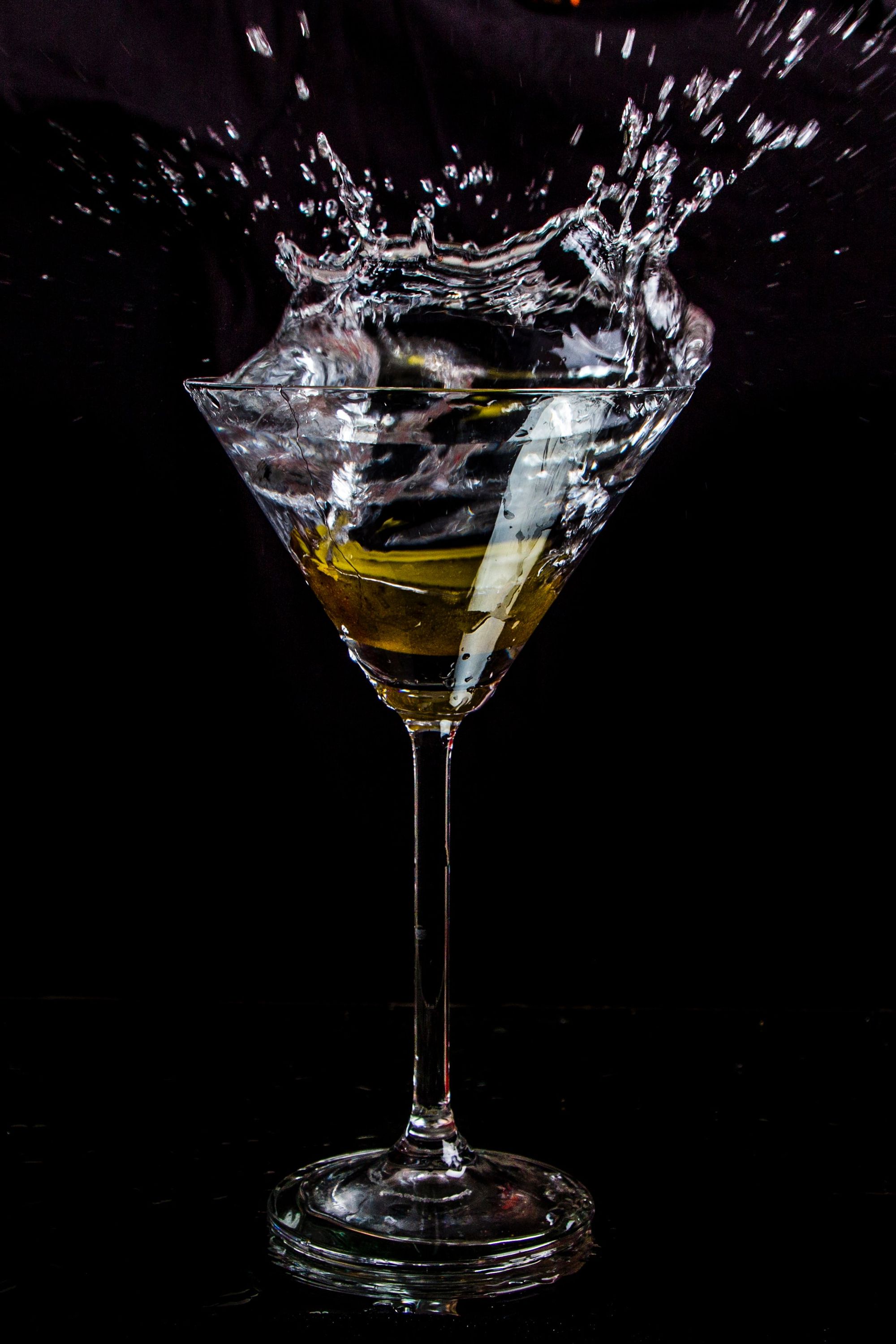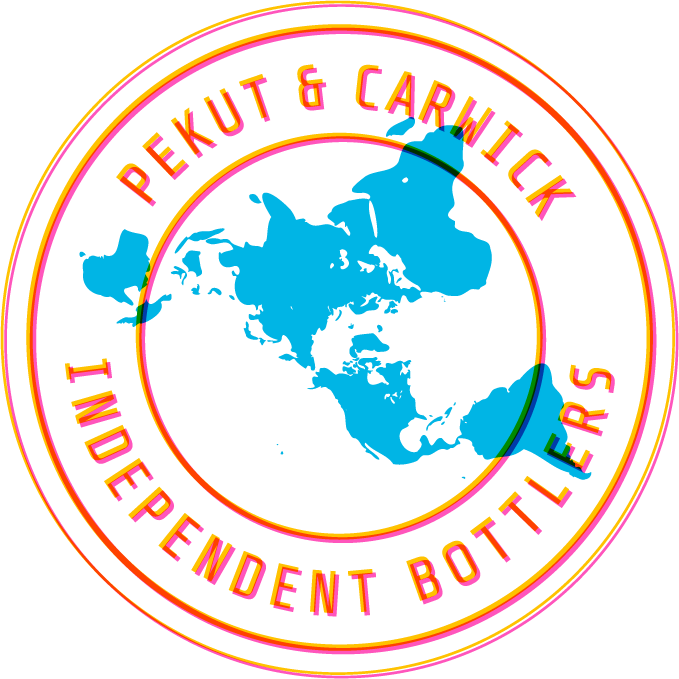The History of the Martini

For a famously crystal-clear cocktail, the martini’s back story sure is murky.
Who Invented the Martini?
Anecdotes abound for who first created the cocktail we now recognize as the gin martini (we’ll get to vodka later). It may have been a celebrating 19th century gold miner in the town of Martinez, California, who requested champagne to toast a successful gold strike. The bartender, lacking champagne, created a concoction that became known as the Martinez: gin, vermouth, bitters, maraschino liqueur, and a lemon slice.
Or, perhaps the Martinez originated across The Bay in San Francisco, around the same time (another miner, another bar).
OR, was it invented on the Other Coast, at the then-glamorous, now defunct, Knickerbocker Hotel in New York City?
To further complicate matters, there are several other vermouth and gin-based cocktails credited with being the martini’s predecessor, including the Marguerite, the Martigny, the Martine, the Martineau, and the Bradford à la Martini.
So what do we actually know?
The first martinis were wet and sweet. While we can’t nail down the actual birthplace of the Martinez, we can lean on Simon Difford’s assertion that its flavor profile, along with most other martini predecessors, were significantly wetter and sweeter than the dry, minimalist martini we know and love today. In addition to using sweet liqueurs like orange curaçao and maraschino liqueur, cocktails like the Martinez and the Marguerite called for Old Tom gin.
Difford offers several possible origin stories for Old Tom gin, which regrettably also cannot be fully confirmed (even the history of martinis can't remember what it did last night). More certain in the annals of historic boozery is Old Tom’s production method, an 18th century pot still distillation that allowed some of the nastier-flavored congeners and impurities into the finished product. To counter these unsavory components, distillers macerated their spirits in soothing licorice and punchy, spicy ginger. When refined sugar became more readily available, it too was added to Old Tom, creating a spirit sweeter than the London Dry gin that gained popularity at the end of the 18th century, but drier than the Dutch jenever of the time.
The Old Tom martini of the day would be fairly unrecognizable to modern martini connoisseurs—sweeter, thicker, and fruitier.
The Martini takes a dry turn.
In 1904 we find the first suggestions of the modern, dry martini in a French book called American-Bar Recettes des Boissons Anglaises et Américaine, which favored equal parts dry gin (usually twice-or-thrice distilled for a cleaner and drier finish) and French dry vermouth with a dash of orange or angostura bitters. The French recipe instructs the bartender to serve the cocktail with a lemon peel, cherry, or olive garnish as specified by the drinker. The Italian vermouth company Martini and Rossi was in the midst of an advertising push around the same time, and this drier version of the martini gained in popularity.
From there on out, the dry gin martini has taken hold of the drinking world’s imagination. In his book, Gin, the Manual, Dave Broom writes,
“The martini isn’t just a drink. It’s a cultural signifier, a rite of passage, a weapon…What started out as a democratic division between dry vermouth and gin (old Tom was widely used), the Martini became progressively drier as the twentieth century advanced so that at its zenith in the 1950s, it had evolved into a cold-eyed assassin.”
Martinis are forever
Of course, we all know the assassin who popularized this cocktail. Ian Fleming's James Bond cemented the martini’s reputation as stiff, masculine, and elegant, and his version favored vodka over gin. Broom posits that this aura of conservative masculinity, along with widespread popularization of vodka in other cocktails, contributed to the martini’s decline starting after the 1960s. But the martini didn’t disappear altogether.
Don't call it a comeback.
The martini managed to survive the 1990s thanks in part to vodka marketing campaigns, bartenders who began naming cocktails “martini” because they were served in a martini glass (hello, espresso martini), and that Cosmo-soaked, 90s pop culture juggernaut, Sex and the City. Who cares if the Pornstar Martini wasn't REALLY a martini, at least the v-shaped glass was still in the public eye.
Since Big Vodka has chilled out a bit with its aggressive advertising (we might have papered our high school closet with Absolut ads) and craft gins are on the ascent, the martini's place seems more or less secured on bar menus the world over. From spy novels to sitcoms, its cultural cachet has run the gamut between sassy and strict, but who cares? Strip away the marketing gloss and the martini is a damn fine, easily assembled cocktail.
That's just, like, your opinion, man
Gin martinis are the best martinis. While we’ve got nothing against vodka, we favor the gin martini because we love good gin, and nothing highlights the delicacies of gin like a martini. There are purists out there (and we mean PURE-ists, vodka is ethanol and water) who love the precision of vodka, we just can't get enough gin.
Right now, we’re loving Dissident Spirits Monterey Pine Gin in a classic martini (recipe below, available for sale online at Blackwell's, in person at Northbrae Bottle Shop, Piedmont Grocery, and Vintage Wine and Spirits). Make it as dry or as wet as you wish (i.e., use more or less vermouth), splash in some olive juice if you like it dirty, and garnish as you see fit (a cocktail onion makes it a Gibson!).
Shaken or stirred?
A good martini is a cold martini, so do pay attention to your ice, and to chilling down your glass. You can achieve the necessary temperature by stirring your gin and vermouth with ice or shaking it with ice in a cocktail shaker. Stirring results in very little dilution, so your martini will be fairly stiff. A shaken martini creates deliciously delicate ice shards which will dance briefly in your glass before melting and slightly diluting your cocktail. Both methods are delightful, and you should definitely experiment. You'll want to chill your glassware with ice and water before you mix your drink.
The Classic Gin Martini
Serves 1
Ingredients
2 ½ oz Dissident Spirits Monterey Pine Gin
¼ oz to ½ oz Dry Vermouth
Optional ¼ oz to ½ oz olive brine
Garnish with olives, pickled cocktail onions, or lemon peel
- Fill a martini glass with ice and water.
- In a large cocktail shaker or mixing glass filled with ice, combine the gin, vermouth, and brine, if using. Stir or shake your martini according to your preference.
- Discard the ice and water from the martini glass and immediately strain the cocktail mixture into the glass. Garnish according to your preference.
